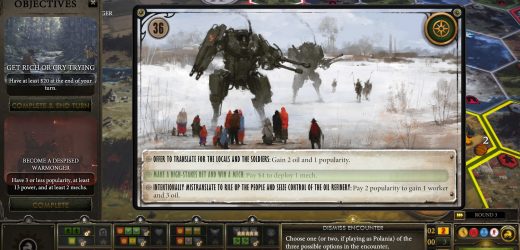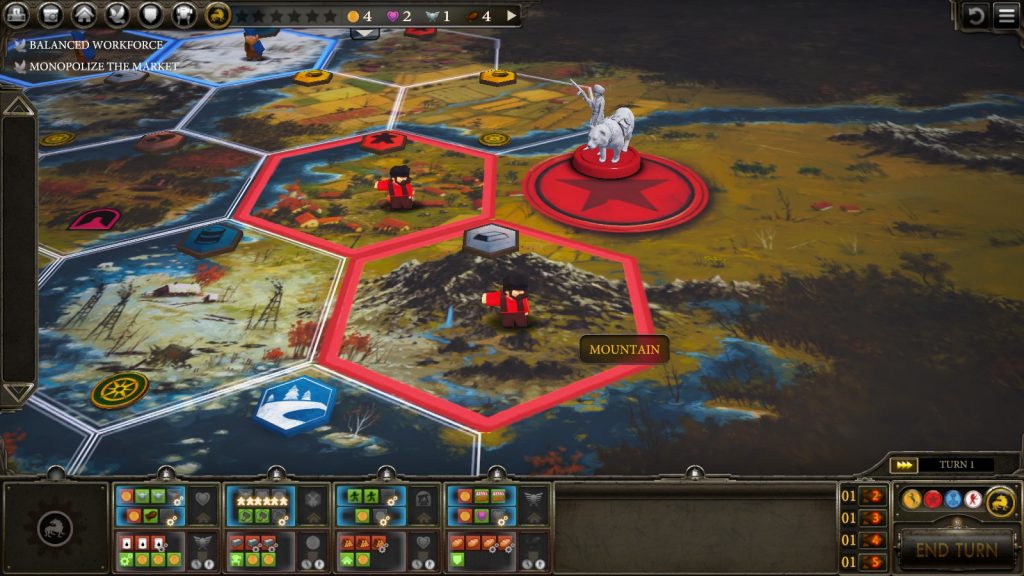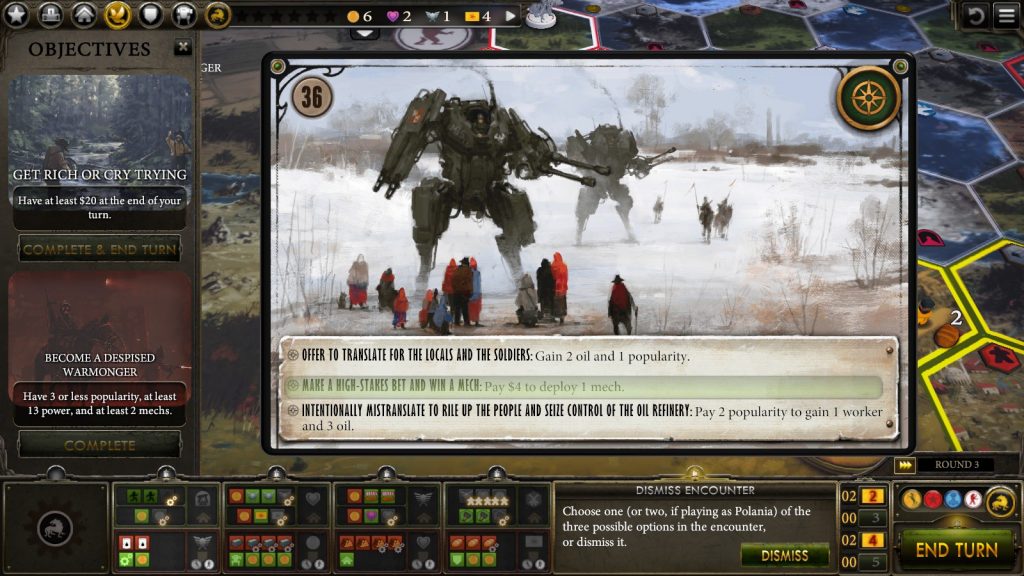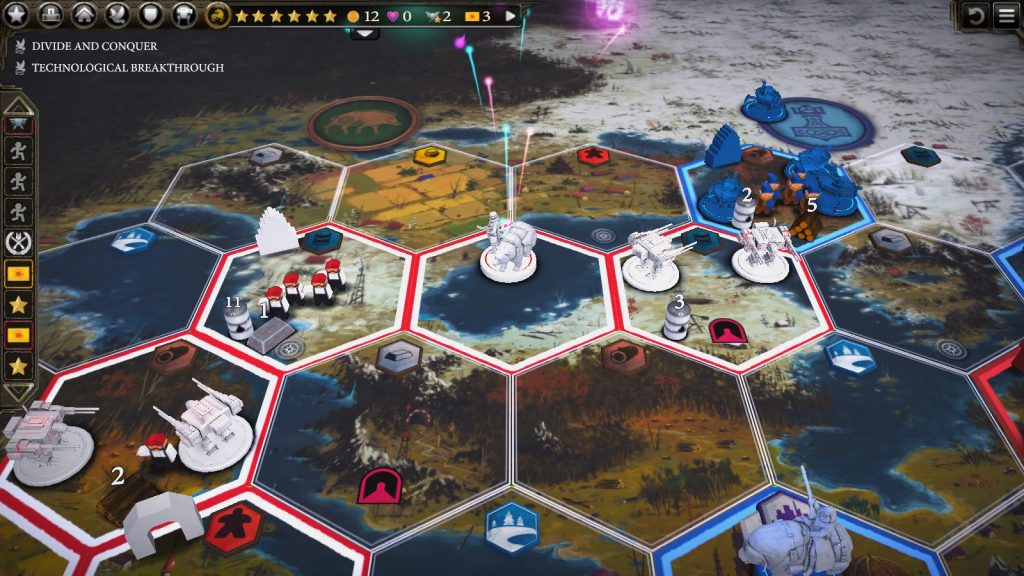Scythe: Digital Edition (Early Access Review)

Source: Cashmoneys
Price: £15.49
Where To Get It: Steam
Version Reviewed: Hotfix 0.56.
Other Reviews: Release
Right now, Scythe: Digital Edition is pretty much what it says on the tin: A digital adaptation of a strategy and resource management board game. Which, accurate as it is, doesn’t really explain why I’m conflicted about it. So let’s get into how “Does what it says on the tin” isn’t, in this case, entirely a compliment at the present time.
Scythe is, at its most basic level, a competitive game in which six russian styled factions rush to achieve supremacy by… Ah, wait, intricacy has reared its intriguing, yet sometimes ugly head already, because no, getting 6 objectives doesn’t win the game, it merely ends it. What matters is a combination of power, popularity, resources, and territory, with multipliers for high popularity and building things over the tunnels that honeycomb the hexagonal, rural arena in which the six factions battle. And, in a normal game where you aren’t shown the score count, that’s a combined battle you’re not really sure you’ll win unless you’re heavily keeping track.

Spot the Rusviet Workers (DISCLAIMER: Difficulty determined by colour blindness type)
So, on the upside, the option to keep track and see this (Score Preview) does exist. For hotseat and single player, anyway. On the downside, this information pretty much requires you hover over the tooltips to remind yourself of the less common symbols. The… Rather small symbols. And the sometimes small text. Which is something else to squint at, as well as Rusviet workers on some of the backgro-
Look, I’m basically saying, rather clumsily, that this game could have done with some accessibility options planned from the start. While there is an option to change the colour of the map, this only actually applies when you’re zoomed out, which, not gonna lie, isn’t a view I tend to use, especially considering that the pretty faithful recreation of the models, the unpainted plastic mechs and heroes in six flavours, and the wooden, blocky workers, is visually appealing when colour issues aren’t making the latter (Arguably more important units than your mechs and heroes) somewhat hard to distinguish.

The event cards are evocative, albeit uncommon features. And some factions, the villains, get to pick more than once here!
The game is currently hotseat, with the option of bots, and, despite its cool boardgame aesthetic, and music with Russian instruments, this… Isn’t serving it too well. It’s definitely a game you want to play with friends, with the uncertainty, the diplomacy, and the nervous planning. As it is, the uncertainty over whether getting that sixth star is the best idea right now only exists when you deliberately avoid the option to remove that veil, and the diplomacy… Well, this is one of the few times I’d say hotseat makes a strategy game, tabletop adaptation or otherwise, less exciting.
It has a cool world, alas, mostly seen in the rulesbook (an outside PDF link), and hinted at in the game. It’s got a good aesthetic. But, at the current time, it’s a good example of how sometimes, you need a human face or two attached to a game to make it what it is. It’s definitely worth a go, and it’s definitely a faithful adaptation of an interesting game… But it’s a faithful adaptation of a game whose interest comes from the dual uncertainty of hidden scores and potentially irrational actors.

The AI victors, who would not have *been* victors if I hadn’t picked on myself. Alas, I didn’t win, I didn’t win, and I would have won if I hadn’t attacked myself.
The Mad Welshman, being a moustache twirler, is a rational actor. Death rays are perfectly logical and sensible time and money expenditures.
